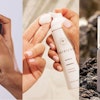Garnier
Cruelty-free hair care, hair color, and skin care

Garnier's Sustainability Rating
Fair
Ingredients
Garnier has made some ingredient commitments to lower its environmental impact alongside its parent company's commitments, which together include avoiding parabens, phthalates, microplastics, other petrochemical-based ingredients, and uncertified palm oil or palm oil-derived ingredients. However, Garnier still uses many ingredients that pose a significant threat to the climate, including harmful suncare ingredients, and other petrochemical-based ingredients. Its products incorporate bio-based and/or biodegradable ingredients. It carries products that have certifications from Leaping Bunny, and 99% of its ingredients are vegan.
Containers & Packaging
Garnier shares some efforts to lightweight its packaging and reduce virgin plastic in its product containers. It claims that some of its bottles are majority-recycled plastic, and Garnier also offers concentrated formats for some products, which helps reduce shipping emissions and packaging waste. Garnier's parent company, L'Oreal Groupe, has a goal of 100% recycled plastic by 2030, though its most recent update shows slow progress and it's unclear what applies to Garnier.
Energy & Water Use
Garnier's parent company, L'Oreal Groupe, shares information on its overall energy strategy. It uses a majority of renewable energy to power its production sites and corporate offices, and has targets for expanding its use of renewable energy to 100% by 2025. L'Oreal Groupe implements energy efficiency measures in its production sites and corporate offices. It implements water conservation measures, including working to increase its water recycling and wastewater quality. Garnier has a global production span, which is standard for the industry.
Refill & Reuse
Garnier utilizes alternative models for some products to avert waste, including by offering waterless formats with ephemeral packaging. It appears to have a takeback partnership with Terracycle but doesn't promote it anywhere on its site, which greatly limits the program's reach and efficacy. It offers bulk sizes for some products, which may help reduce packaging waste.
Slow Cleaning
Garnier offers seasonal products or frequent releases, which can encourage overconsumption and production of excess inventory.
Marketing
Commons is still evaluating this brand's marketing emails.
Transparency & Reporting
Garnier has a prominent sustainability page with limited high-level details on its climate strategy. It previously published its own sustainability report, but hasn't released one since 2022. Its parent company, L'Oreal Groupe, publishes a detailed annual report with a clear, impact-driven strategy and progress reporting. L'Oreal Groupe's last annual report was published in 2024. Garnier shares a complete list of ingredients used in its products, on a per product basis.
Emissions Tracking
Garnier previously reported emissions in its brand-level sustainability report, but it's unclear if its numbers were specific to Garnier or a value for L'Oreal Groupe as a whole. Garnier's parent company, L'Oreal Groupe, internally measures and publicly reports its company-level emissions in partnership with, or with auditing from, a third party. It includes a breakdown by scope and shares select product-level LCAs. The last reporting period for L'Oreal Groupe was 2024 and in this most recent update, its estimated emissions footprint was 8,173,101 tons CO2e.
Targets & Offsets
Garnier's parent company, L'Oreal Groupe, has SBTi-approved emissions reduction targets for the medium-term (5-10 years), long-term (10+ years). It has reported on its progress within the past year, and is on track for some of its targets, but is far off track for its scope 3 target. Commons couldn't find evidence that this brand offsets any emissions.
Supply Chain & Labor
Garnier's parent company, L'Oreal Groupe, publishes limited information about its supply chain partners and is working on tracing some of its supply chain. L'Oreal Groupe publicly shares a supplier code of conduct, which prohibits forced labor, prohibits child labor, establishes grievance mechanisms, and disallows unauthorized subcontracting. Its code of conduct doesn't ensure the right to collective bargaining where not allowed by law, ensure a living wage, or include environmental clauses. It has a stated policy of regularly auditing its supply chain partners, which can mitigate human and environmental risks.
Advocacy
Garnier's parent company, L'Oreal Groupe, doesn't openly disclose its climate-obstructive trade association memberships. L'Oreal Groupe is member of 1 large climate-obstructive trade association: Personal Care Products Council, and belongs to some pro-climate advocacy orgs, including: Ceres. It employs state lobbyists with few fossil fuel aligned clients. It didn't donate more than $100k to climate-obstructive candidates or PACs from 2018-2024.
Garnier is rated Fair because it has started to improve its ingredients and packaging, but still has room to grow.
Garnier and its parent company have committed to avoiding select ingredients that pose a threat to the climate, including parabens, phthalates, microplastics, other petrochemical-based ingredients, and uncertified palm oil or palm oil-derived ingredients. It utilizes alternative models to reduce its waste and emissions footprint, such as offering a few waterless formats with ephemeral packaging. Garnier's parent company uses nearly 100% renewable energy in its production, reports on its emissions measurement, and has SBTi-approved emissions reduction targets.
However, while Garnier avoids select ingredients, it still uses many that pose a significant threat to the climate, including harmful suncare ingredients and other petrochemical-based ingredients. Garnier still relies on plastic packaging, of unknown type and recycled content, and it doesn't provide clear recycling guidelines. Though it appears to have a takeback partnership, it doesn't promote or message it to customers, which greatly limits the program's reach and efficacy. Packaging is a large part of the industry's footprint, and we hope to see more work here in the future.
Garnier is owned by L'Oreal Groupe.
Our ratings are based on a scale from 1 (harmful) to 5 (best). How we rate →
https://www.garnierusa.com/about-ingredients
https://inside-our-products.loreal.com/ingredients/ingredients-we-do-not-use-our-products
https://www.garnierusa.com/about-garnier/greener-beauty
https://www.loreal.com/-/media/project/loreal/brand-sites/corp/master/lcorp/documents-media/publications/20231222climate-transition-planvf-approved.pdf?rev=f3c32a26c11f476f9bfde696734a4907
https://www.loreal.com/-/media/project/loreal/brand-sites/corp/master/lcorp/documents-media/publications/loreal-for-the-future--2030-forest-policy.pdf?rev=77a6282004f04ba589cf9913704d792e#:~:text=Within%20this%20Forest%20Policy%2C%20L
https://www.loreal.com/-/media/project/loreal/brand-sites/corp/master/lcorp/documents-media/publications/l4f/loreal-for-the-future--booklet.pdf?rev=265bdbc0ded24a95b3aae0aba278b8bd&hash=81C863AF659C16D7C5550B0F4976B910
https://www.garnierusa.com/about-garnier
https://www.garnierusa.com/about-our-brands/whole-blends/shampoo-bars
https://www.loreal.com/en/articles/commitments/green-transportation/
https://www.loreal.com/-/media/project/loreal/brand-sites/corp/master/lcorp/documents-media/publications/l4f/loreal-for-the-future--booklet.pdf?rev=265bdbc0ded24a95b3aae0aba278b8bd&hash=81C863AF659C16D7C5550B0F4976B910 https://www.loreal.com/en/group/about-loreal/our-purpose/reducing-plastic-packaging/
https://www.garnierusa.com/about-garnier/greener-beauty#more-recycled-and-recyclable-packaging
https://www.loreal.com/en/group/about-loreal/our-purpose/reducing-plastic-packaging/
https://www.garnierusa.com/about-garnier/greener-beauty#more-use-of-renewable-energy
https://www.loreal.com/en/commitments-and-responsibilities/for-the-planet/fighting-climate-change/
https://www.terracycle.com/en-US/brigades/garnier
https://www.loreal-finance.com/system/files/2025-03/2024_Universal_Registration_Document_LOREAL.pdf
https://www.loreal-finance.com/en/annual-report-2023/
https://sciencebasedtargets.org/target-dashboard
https://www.loreal.com/-/media/project/loreal/brand-sites/corp/master/lcorp/3-commitments/external-recognition/employee-human-right-policy.pdf?rev=66e322e9c256424fb42dbe7e5240804d
https://www.personalcarecouncil.org/news-release/personal-care-products-council-announces-loreals-david-greenberg-as-new-board-chair/
https://fminus.org/lobbyists/
https://www.fec.gov/data/browse-data/
Get Rewards
Earn for sustainable purchases
Commons rewards you for sustainable purchases from all our Top Rated brands, plus thousands of everyday purchases — from thrift stores to public transit.
Learn more about rewards ->







